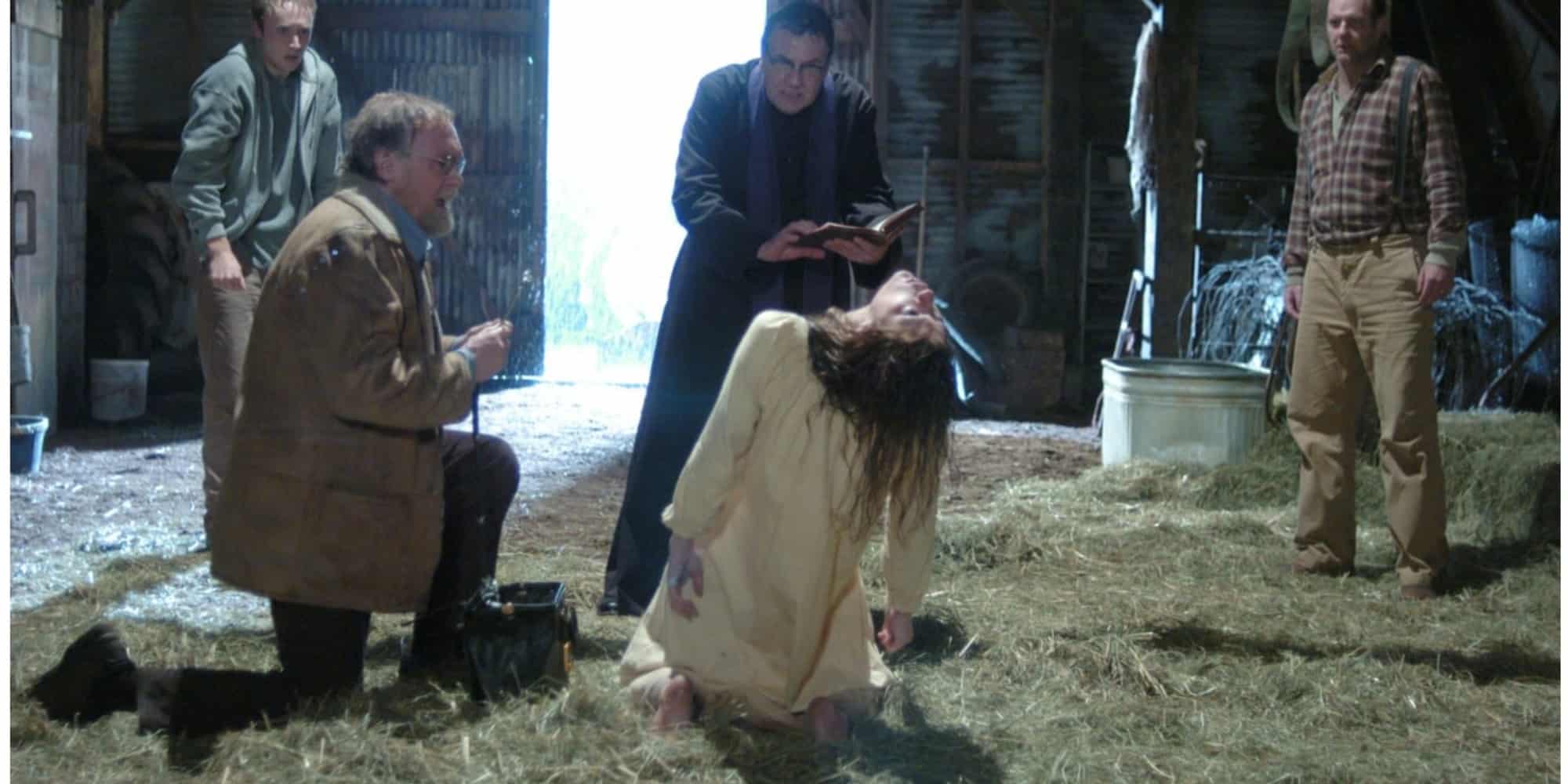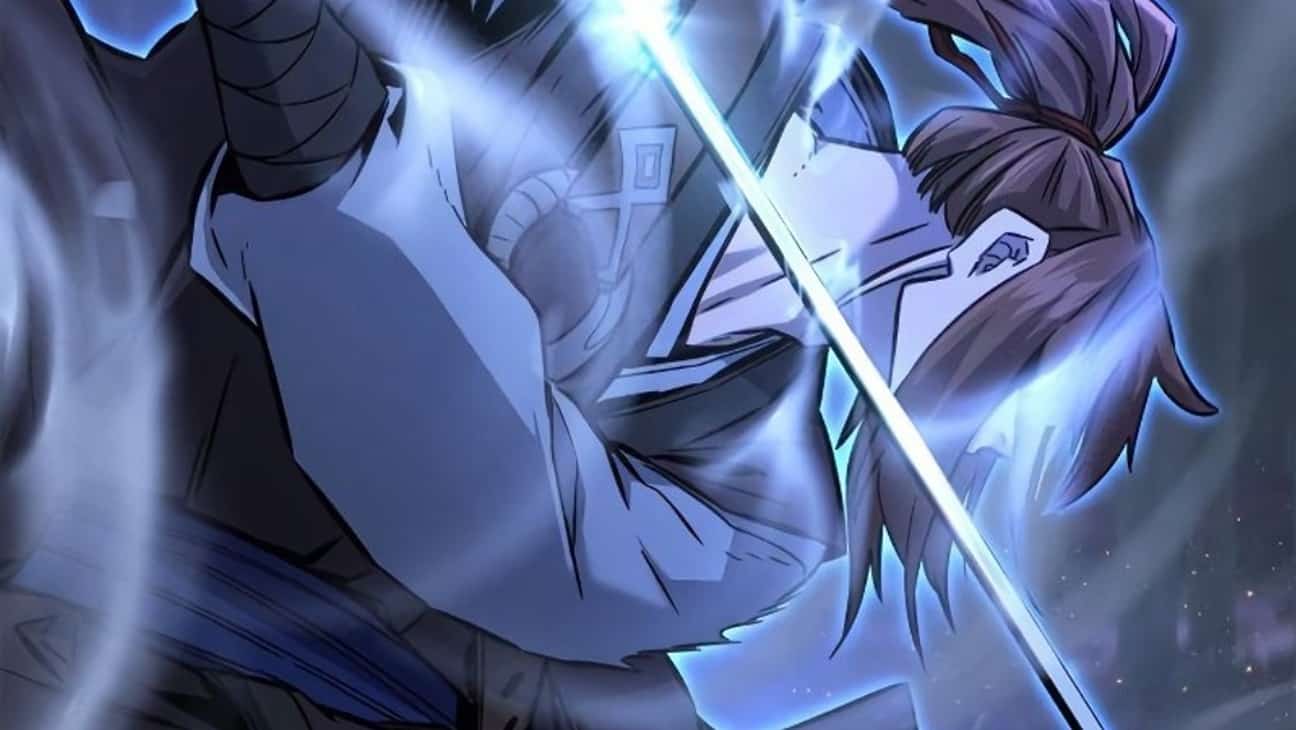The 2005 supernatural horror film “The Exorcism of Emily Rose” stars Laura Linney as defense lawyer Erin Bruner, Tom Wilkinson as Father Richard Moore, and Jennifer Carpenter as Emily Rose. It explores the legal consequences of a young woman’s attempted exorcism death. Prominent attorney Erin Bruner is defending Father Moore, who is charged with careless homicide in the death of Emily Rose.
The film skillfully combines two narratives: one set in the courtroom, where legal fights are fought, and another through haunting flashbacks, showing Emily Rose’s terrifying possession. The film explores the conflict between religion and science.
“The Exorcism of Emily Rose” became a super hit thriller psychological movie thanks to Jennifer Carpenter’s performance as Emily Rose. The show leaves the audience to question their religion and a frighting experience of the wrath of demonic powers.
Also Read: 50 Best Asian Horror Movies of All Time To Watch
11 Emily Rose’s Exorcism Facts
1. Directed by Scott Derrickson, who also co-wrote the screenplay with Paul Harris Boardman
Horror and sci-fi director Scott Derrickson became a filmmaker, screenwriter, and producer because of his love of film. “The Exorcism of Emily Rose” shows Derrickson’s mastery of horror’s psychological details.
“Hellraiser: Inferno,” Derrickson’s debut movie, was released straight-to-video in 2000. Derrickson’s directorial debut and introduction to his visual style and thematic themes got mixed reviews.
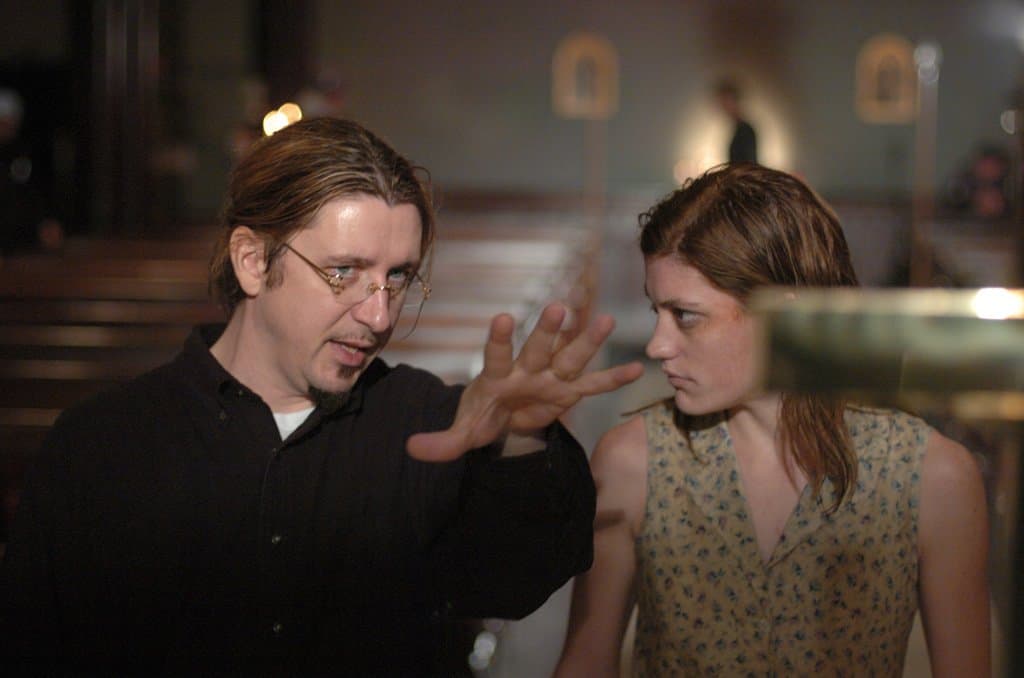
After “Hellraiser: Inferno,” Derrickson directed “The Exorcism of Emily Rose.” The Anneliese Michel exorcism inspired the film, co-written with Paul Harris Boardman. Derrickson and Boardman combined horror with courtroom drama to create a fascinating story about faith and the supernatural.
Derrickson and cinematographer Tom Stern gave the picture a disturbing look. Stern’s lighting and camera angles added to the film’s tension and eeriness. Derrickson’s directing, Boardman’s writing, Carpenter’s acting, and Stern’s photography created a strong film that resonated with horror fans and broad viewers.
“The Exorcism of Emily Rose” premiered in September 2005 to favorable reviews. Scott Derrickson’s horror film career was strengthened by the film’s box revenue and critical success. Scott Derrickson’s passion for narrative, human psychology, and horror and supernatural aspects has made him a distinctive and renowned director.
2. The story is inspired by the real-life case of Anneliese Michel
The tragic case of Anneliese Michel has drawn attention and generated arguments concerning medical and spiritual reasons for mental health concerns. A devout Catholic family raised Anneliese Michel in Leiblfing, West Germany. She was a dedicated and compassionate girl who attended church often.
Teenage Anneliese’s life turned grim. She had her first temporal lobe epilepsy seizure aged 16. Despite treatment, she developed sadness and hallucinations. Her symptoms worsened, leading her family to suspect a more serious illness.
Anneliese’s behavior got increasingly unstable. She attacked her family, hated religion, and heard voices warning her she was doomed.
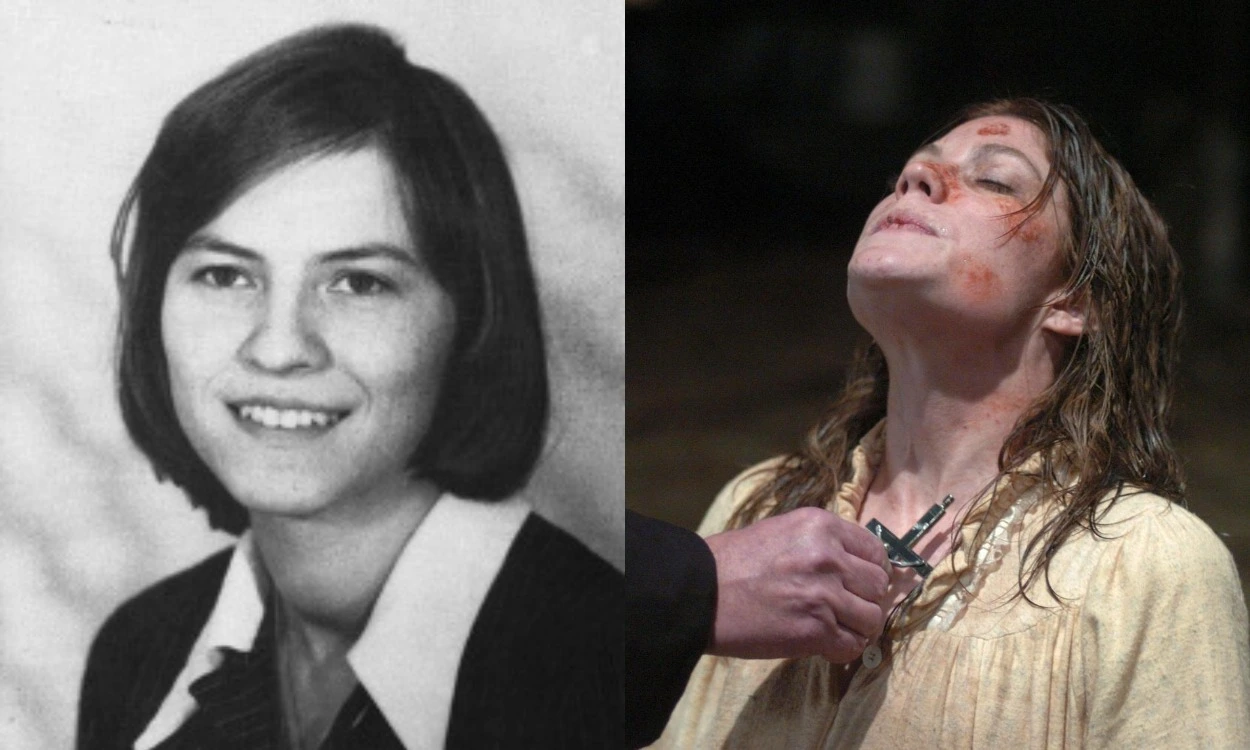
Anneliese’s condition didn’t improve despite medical treatment. Her family sought medical and religious treatment. Anneliese and her family grew concerned that her illness was demonic possession during this time. They believed she was possessed by several demons and needed exorcism for salvation.
Josef and Anna Michel, Anneliese’s parents, requested an exorcism from the Catholic Church. Only Anneliese’s parents and two priests attended. Anneliese was violent during the exorcisms. She didn’t eat and talked about dying for others’ faults.
The exorcisms worsened Anneliese’s health. She became weak and thin. She was malnourished and dehydrated in her final weeks.
After months of exorcisms and suffering, 23-year-old Anneliese Michel died on July 1, 1976. Malnutrition, dehydration, and epilepsy were the official causes of death. Her terrible death sparked a lengthy and controversial judicial battle that riveted Germany and the world.
In 1978, Anneliese’s parents and exorcist priests were prosecuted with negligent homicide. The prosecution claimed that Anneliese’s death was preventable if she had received medical treatment and that the exorcisms caused her severe malnutrition and dehydration.
In the courtroom, exorcism recordings showed how unpleasant the practices were. The cassettes showed Anneliese’s weakness and agony.
The four defendants were convicted of manslaughter in 1978 and sentenced to six months in prison and three years on probation. Religion’s role in mental illness and demonic possession cases was debated after the ruling.
Also Read: 38 Horror Movies Based On True Stories To Watch
3. Jennifer Carpenter studied the real-life case of Anneliese Michel with a neurologist
Jennifer Carpenter’s preparation for “The Exorcism of Emily Rose” includes extensive research and expert consultation. Carpenter understood the complexities of possession and its effects on Anneliese Michel’s life to accurately represent Emily Rose.
Actors must explore psychological suffering, spirituality, and physical manifestations to play possession. Jennifer Carpenter recognized for her dedication, wanted to play the role sensitively and honestly.
Carpenter learned about Anneliese’s strict Catholic background. She found that Anneliese had temporal lobe epilepsy and psychosis in her teens. Anneliese and her family began to suspect demonic possession as her illness worsened.
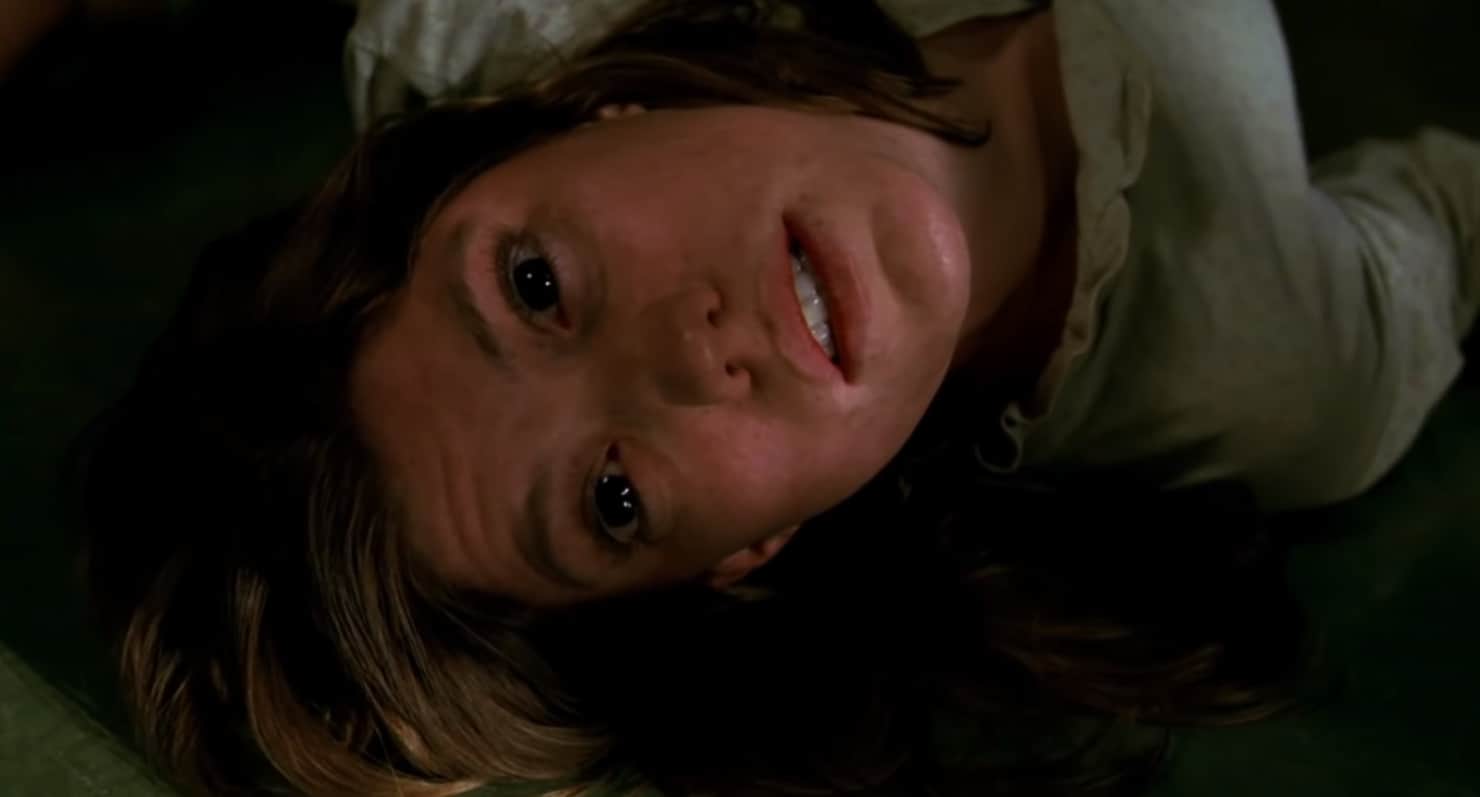
Carpenter had a lot to work with because the picture used flashbacks. She witnessed and understood the possessed character’s suffering, her emotional toll, and the terrible experiences that defined her journey.
Carpenter also studied exorcism records. These recordings revealed ritualists’ mental states. She obtained a greater understanding of possessed people’s terrible and disorienting experiences by reading this stuff.
Neurologists and medical specialists helped her understand temporal lobe epilepsy and psychosis. This work with neurologists helped her to understand Emily Rose’s mental and physical health challenges.
Jennifer Carpenter also discussed the psychological issues of possessed people with psychologists and mental health specialists. Jennifer Carpenter immersed herself in her role while filming. Carpenter’s portrayal of her character’s pain and desperation moved spectators and critics, boosting the film’s effect.
Her portrayal of Emily Rose showed her acting skills and respect for real-life victims of similar trauma. Jennifer Carpenter appreciated Anneliese Michel and gave “The Exorcism of Emily Rose” authenticity by empathizing, researching, and working with specialists. Her passion and intensity in portraying a character steeped in possession and spirituality contributed to the film’s success and critical acclaim.
4. Jennifer Carpenter’s radio woke her up at night
Vancouver, Canada, where Jennifer Carpenter was filming “The Exorcism of Emily Rose”. Even off-set, she was immersed in the film’s atmosphere due to her intense performance. Jennifer woke up restless after midnight. A faraway radio station disrupted her dreams. The background tune and lines echoed the film’s unsettling atmosphere.
Jennifer struggled to sleep through the noise, groggy and confused. However, the sound haunted her. The static-filled radio became louder, its unsettling tune keeping her awake.
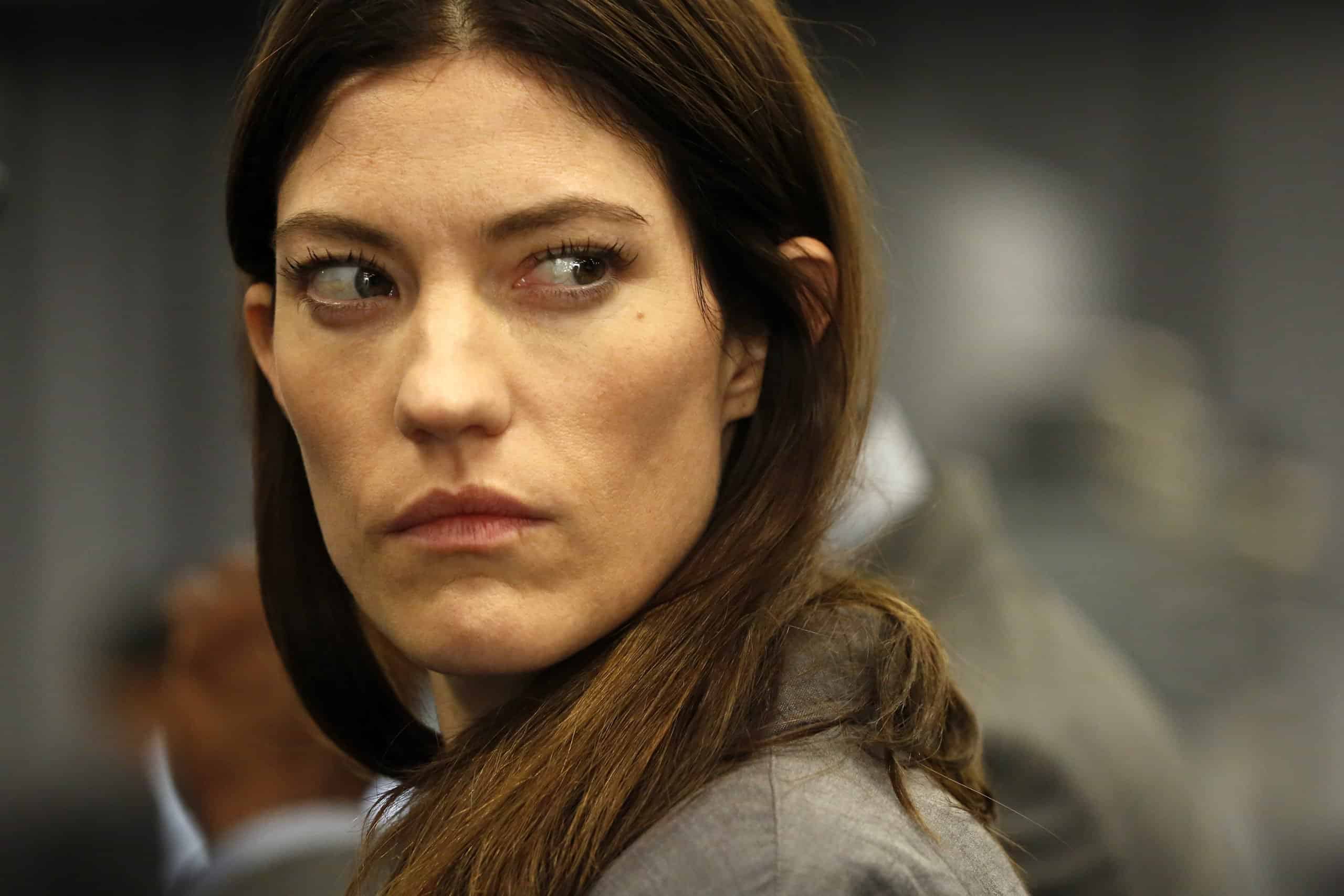
Jennifer investigated the phantom radio with curiosity and displeasure. She climbed out of bed to find the source and silence it. As she neared the living room, the music intensified, drawing her closer. She kept thinking the scenario was odd. To her surprise, it was her radio. The radio, which she had switched off before night, suddenly hummed with an exotic tune that shivered her.
Jennifer struggled to comprehend the strange event. Was it a technical error or station interference? Was it supernatural? Jennifer hesitated to turn off the radio, half-expecting it to reveal a secret. “The Exorcism of Emily Rose” penetrated into her reality, blending fiction and reality.
The radio incident’s origins and importance remained unknown. It shaped Jennifer Carpenter’s “The Exorcism of Emily Rose” experience. It became a personal narrative shared with coworkers and friends and a strange thread in her acting life.
5. Laura Linney said that her TV turned on at night during the shooting
“The Exorcism of Emily Rose”‘s creepy mood is enhanced by Laura Linney’s reports of weird occurrences while filming. The film follows Father Richard Moore, a Catholic priest charged with negligent murder for killing Emily Rose during an exorcism. Laura Linney played defense attorney Erin Bruner.

Like Jennifer Carpenter, Laura Linney immersed herself in Erin Bruner throughout “The Exorcism of Emily Rose” production. Linney, a dedicated actress, embraced the emotional intensity and psychological complexity of her role to deliver a stunning and realistic performance.
Laura Linney was confused and unsettled by strange incidents in Vancouver. Her TV turning on by itself at night was a remarkable event. Linney thought of the situation as a technical fault or electrical issue. However, the phenomenon’s regularity and timing made her suspect something supernatural.
Linney struggled to ignore the bizarre incidents as the nights dragged on. She felt like a force was watching her.
6. The film combines elements of a courtroom drama with supernatural horror
“The Exorcism of Emily Rose” masterfully combines courtroom drama and supernatural terror. Demonic possession films and courtroom dramas are as distinct as two subgenres can be. Father Richard Moore, a Catholic priest, is charged with negligent murder for Emily Rose’s death during an exorcism. The film alternates between the trial and flashbacks of Emily Rose’s possession and exorcism.
The prosecution claims that exorcism negligence caused Emily Rose’s death. Medical evidence and expert testimony show that temporal lobe epilepsy and psychosis could explain Emily’s symptoms.
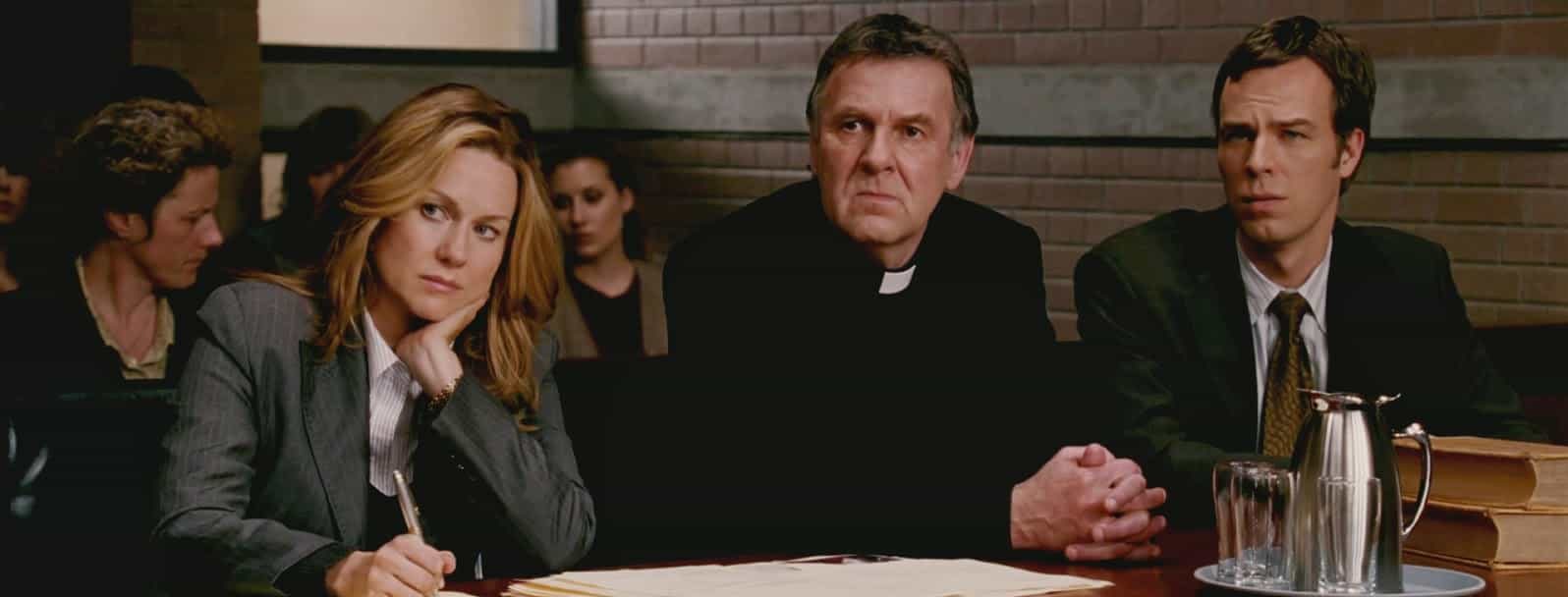
The defense, led by attorney Erin Bruner, claims that Emily Rose was possessed by demons and that her religious beliefs required exorcism attempts. Erin Bruner, originally suspicious, becomes increasingly involved in the supernatural aspects of the case as the trial develops, leading her to examine her views and consider the otherworldly.
Flashbacks show Emily Rose’s terrifying possession throughout the courtroom drama. These visuals contrast with trial processes, intensifying dread and suspense.
Father Moore’s trust in demonic possession and willingness to defend his conduct in the name of faith confront the court’s reasonable and factual approach.
The video skillfully presents information and arguments that make viewers question Emily Rose’s condition.
“The Exorcism of Emily Rose” stands out in horror for its terrifying and suspenseful scenes and thought-provoking and philosophical ideas.
The film’s dual storyline, switching between the trial and Emily Rose’s possessed memories, is lively and fascinating. The supernatural horror components add tension and suspense.
Also Read: 45 Best Horror Scream–Worthy Mini-Series to Watch
7. Jennifer Carpenter contorted her body without visual effects during exorcism scenes
“The Exorcism of Emily Rose” showcases Jennifer Carpenter’s ability and determination. Her ability to contort her body and make scary bodily movements during exorcism moments without visual effects was notable. Carpenter’s incredible physicality gave her character’s possession a disturbing and unsettling authenticity that fascinated and scared spectators.
Jennifer Carpenter trained and researched for her physically demanding part as Emily Rose. She researched Anneliese Michel’s case, on which the film is based, and exorcism and possession narratives to comprehend possessed people’s experiences.
Scott Derrickson, the film’s director, wants to emphasize physical performance above visual effects in the exorcism scenes. He believed that a more natural and true portrayal of possession would immerse people in the character’s dreadful anguish.
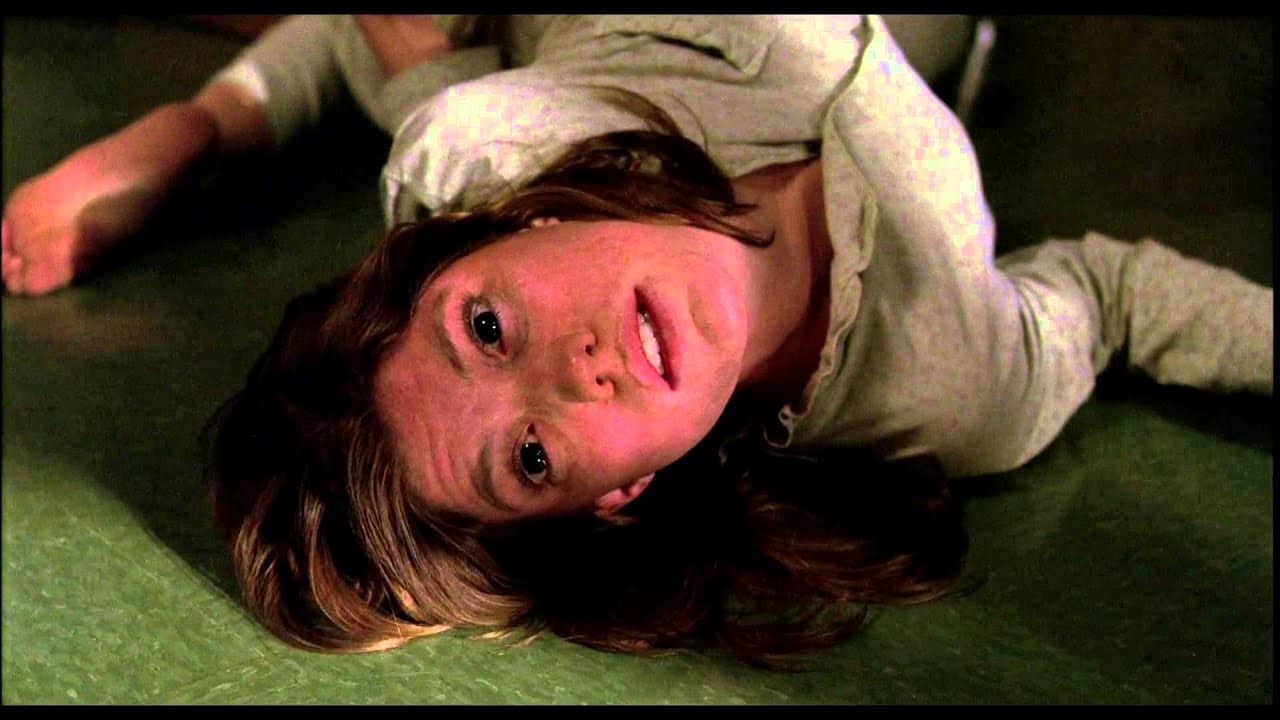
Jennifer Carpenter worked with the film’s special effects team to master the possession scenes’ bodily movements. They choreographed Emily Rose’s physical contortions to show possession’s misery.
Carpenter practiced yoga, Pilates, and body control exercises. These exercises gave her the power, flexibility, and body awareness to successfully mimic possessed movements. Her breathing and mental concentration training helped her maintain intense physicality for long, emotionally taxing situations.
Carpenter portrayed possession’s horror with intensity and vulnerability. She distorted her body during exorcisms to create a disturbingly realistic portrayal of a demonic-possessed individual.
8. Some countries renamed the film “The Exorcism of Anneliese Michel”
“The Exorcism of Anneliese Michel” was renamed in several nations for several reasons. Renaming the film “The Exorcism of Anneliese Michel” improved its reliability as a film that portrayed real events. Emphasizing the case’s relationship could show viewers that the film is based on real events, even though it takes creative alterations.
Recognizing Anneliese Michel as the film’s inspiration may be more appropriate, given the case’s sensitivity and controversy.
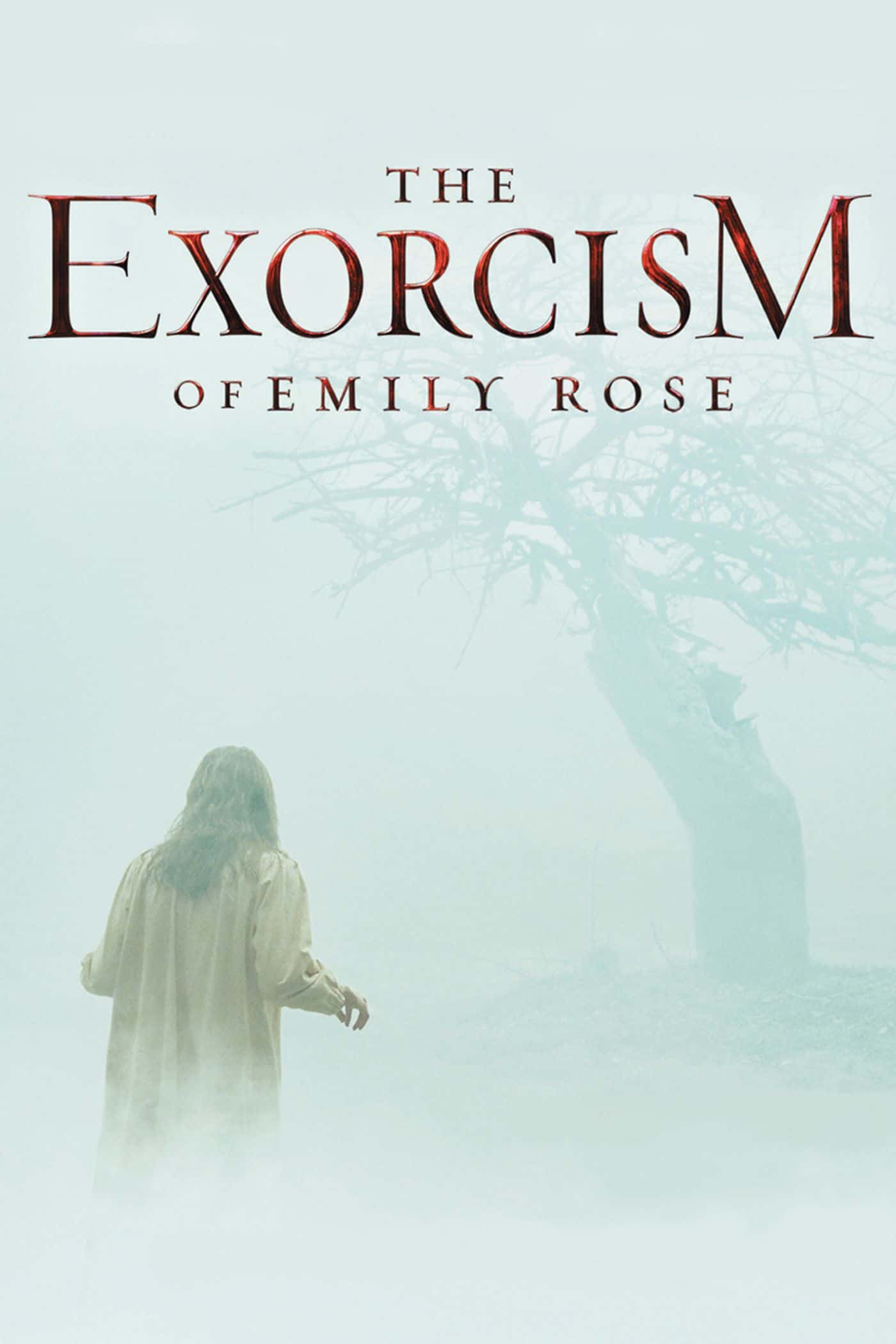
In some countries, putting “Emily Rose” in the film’s title could be considered slander or exploitation of the case. Renaming the film “The Exorcism of Anneliese Michel” may have avoided legal concerns while acknowledging the inspiration.
Despite the title change, the film’s content is mostly the same. “The Exorcism of Emily Rose,” or “The Exorcism of Anneliese Michel,” the film investigates the legal and philosophical implications of Anneliese’s possession.
9. Religious groups protested the film’s distribution in various countries
“The Exorcism of Emily Rose” was criticized by religious organizations worldwide for exploiting Anneliese Michel’s real-life exorcism. The film’s depiction of possession and exorcism, together with its mix of supernatural terror and courtroom drama, prompted heated disputes over artistic freedom, sensitive treatment of real-life occurrences, and religious depiction on screen.
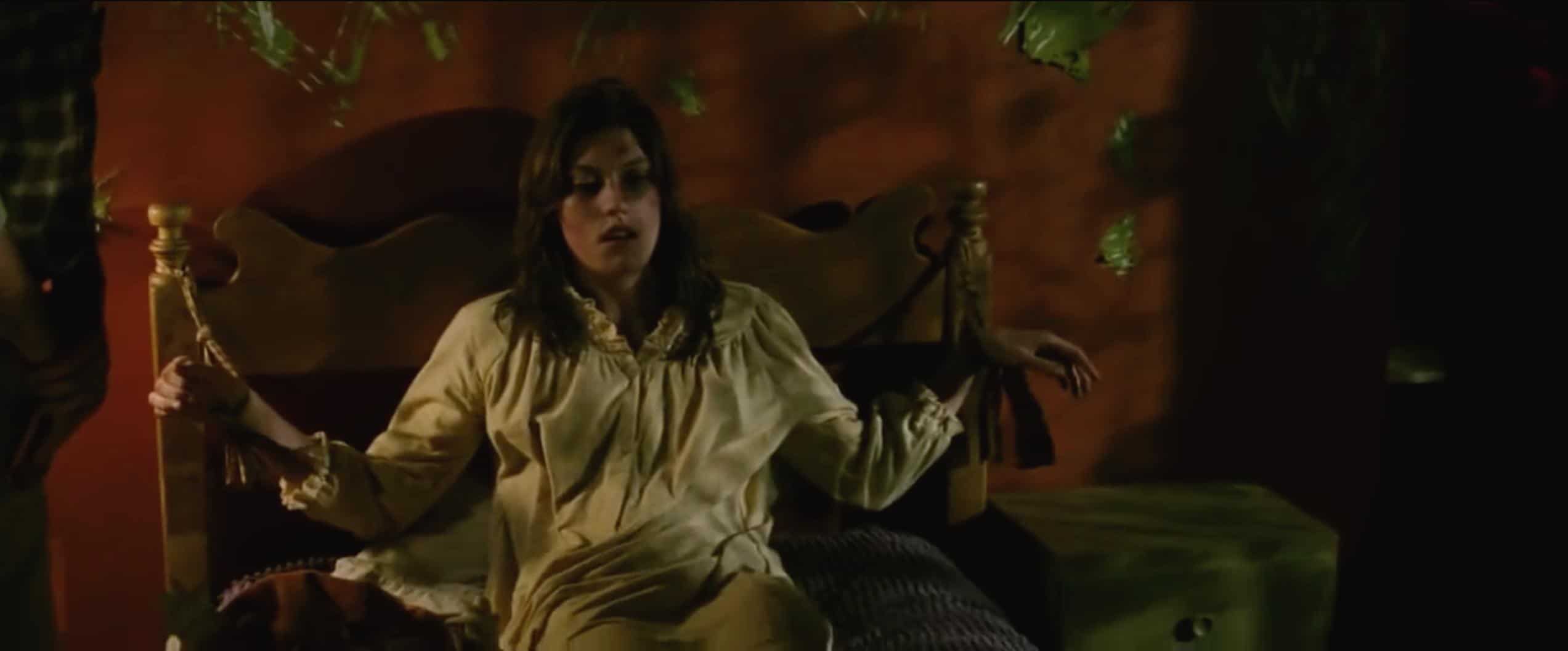
Some critics stated that “The Exorcism of Emily Rose” exploited Anneliese Michel and her family’s sorrow for profit. The picture was indifferent to religious ideas and insulting to Anneliese, who suffered greatly. Religious groups also criticized the film’s portrayal of exorcism, saying it encouraged false beliefs. The Catholic Church’s approach to spiritual healing was tarnished by exorcism’s horrific image.
Some critics also claimed that “The Exorcism of Emily Rose” blurred the borders between fact and fiction, making viewers think it was a true story. The film’s courtroom drama, which showed a priest’s negligent homicide trial for Emily Rose’s murder, was highly criticized.
International distribution and religious elements widened the film’s criticism. Religious leaders and organizations protested and banned “The Exorcism of Emily Rose” in Christian-majority countries.
The film’s marketing and advertising increased the debate. Some critics claimed that the film’s promos and advertising sensationalized its horror components, irritating religious audiences who believed the film insulted their beliefs.
The producers justified “The Exorcism of Emily Rose” as fiction that was inspired by true events. Instead of retelling the Anneliese Michel case, the film explored faith, skepticism, and the supernatural.
10. The $19-million film grossed over $140 million globally
The $19-million film “The Exorcism of Emily Rose” grossed over $140 million worldwide. Effective marketing, public appeal, critical acclaim, and the continued popularity of supernatural horror films contributed to its box office success.
Horror fans were hyped by the film’s marketing. The film’s spine-chilling atmosphere, frightening images, and tantalizing mix of courtroom drama and supernatural terror were promoted in trailers. “What happened to Emily?” piqued viewers’ interest in Emily’s possession.
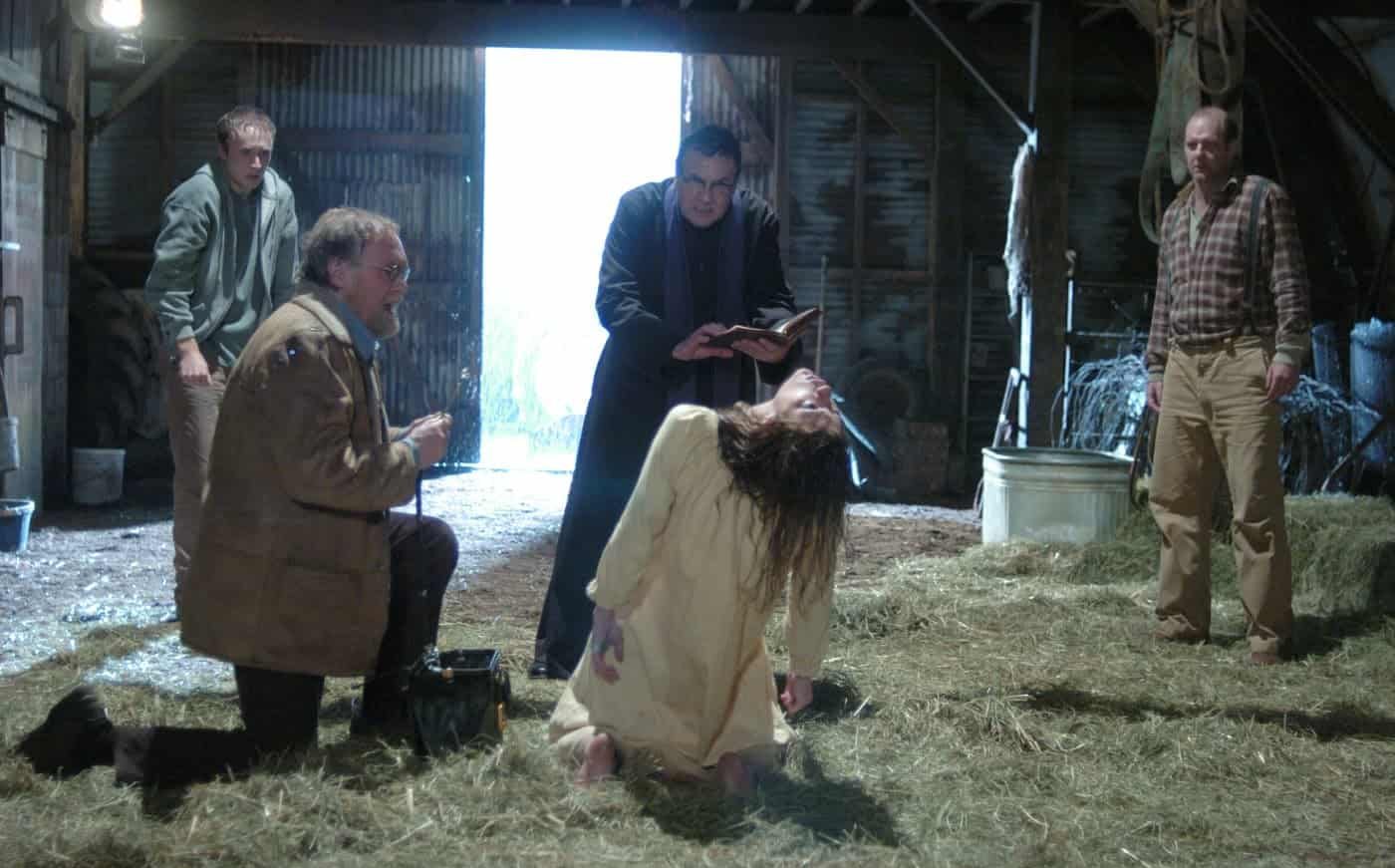
Critics and viewers lauded Jennifer Carpenter as Emily Rose and Laura Linney as Erin Bruner. Carpenter’s disturbing depiction of possession without visual effects created a lasting impression. Linney’s believable portrayal of a cynical defense attorney managing the case gave the film depth and passion.
The film’s unique blend attracted non-horror audiences. Legal drama and mystery fans loved the courtroom scenes, while horror fans loved the creepy supernatural sequences.
The film’s September 2005 release coincided with Halloween when horror pictures usually do well. “The Exorcism of Emily Rose” dominated the horror category and attracted a greater audience due to a lack of serious competition.
Sales, rentals, and streaming services for home entertainment helped it to keep earning success. The gripping plot and engaging performances contributed to the movie’s high replay value, which inspired audiences to see it more than once.
Also Read: Top 10 Marvel Movies Which Broke Records At Box Office
11. Nominated for several awards, including Saturn Awards and Teen Choice Awards
Nominations for the Saturn Awards, which celebrate science fiction, fantasy, and horror films. “The Exorcism of Emily Rose” was nominated in multiple categories, demonstrating its horror skill and ability to fascinate audiences with its unsettling narrative and acting.
Best Horror Film: The film’s nomination shows its success as a genre-bending horror film. Horror aficionados loved its gloomy atmosphere and spine-chilling moments.
Best Actress – Jennifer Carpenter: Carpenter played Emily Rose’s possession. She deformed her body without visual effects to play the possessed character, demonstrating her passion and talent to create a disturbing and unforgettable screen presence.
Best Supporting Actress – Laura Linney: Laura Linney was nominated for her portrayal of Erin Bruner, the defense attorney struggling with the case. Linney’s complex performance enhanced the courtroom drama.
Paul Harris Boardman and Scott Derrickson’s screenplay earned the picture a Best Writing nomination. The film transcended horror conventions by blending supernatural dread with a captivating courtroom drama.
Teens and young adults vote on the year’s best music, film, television, and sports in Teen Choice Awards. Choice Movie Scream: Audiences reacted emotionally to the film’s horrifying and suspenseful scenes. The film’s capacity to evoke terror and exhilaration made it memorable for spectators.
Choice Movie Actress: Jennifer Carpenter’s nomination honors her Emily Rose performance. Her portrayal of the possessed character impressed young audiences, establishing her as a horror talent.
The Saturn and Teen Choice Awards nominations show the film’s industry-wide impact. Its Saturn Awards nominations demonstrate its horror expertise and cinematic skills. The film’s Teen Choice Awards nominations demonstrate its appeal to a younger audience.
“The Exorcism of Emily Rose” was a hit globally and a major horror film. Its box office success and continued popularity show its lasting impact on viewers and its standing as a memorable and influential horror film. The film gave the exorcism subgenre a new spin by combining otherworldly horror with judicial drama.


